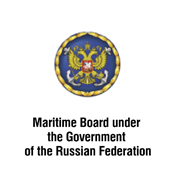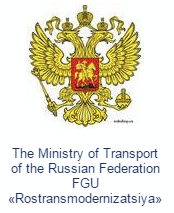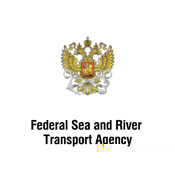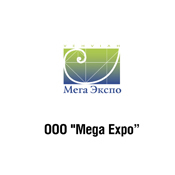“Marine Industry of Russia”
«President-Hotel»
Department of affairs of the President of the Russian Federation
Moscow, 24, B.Yakimanka Str
24-25 May 2017
May 07, 2015
Greetings from the Ministry of Industry and Trade of the Russian Federation
January 28, 2015
The Forum organizers received the greeting from Gutenev V.V., the First Deputy Chairman of the Russian Engineering Union.
January 15, 2015
The Government of the Russian Federation addressed a welcome letter to the V International Forum Marine Industry of Russia.
More on shipbuilding materials
The diversity of materials used in shipbuilding is conditioned by diversity of requirements to operating characteristics of mechanisms and structural components of the vessel. All these materials are classified as follows:
- Hull metallic and non-metallic materials for shipbuilding
- Standard, high-strength and firm ship steel
- Titanium and aluminum alloys
- Metal- and polymer-based composite materials
- Protective coatings
- Materials for ship and general machine-building
- High-alloy steel
- Titanium alloys
- Aluminum alloys
- Copper alloys
- Non-metallic materials
- Materials for fabrication of nuclear and heat engines
- Hull radiation-resistant plates
- Corrosion resistant steels and alloys
- High-nickel alloys
- Titanium alloys
- Polymers and composition materials
- Functional materials etc
Shipbuilding Materials
Shipbuilding steel is the most common material. It is to meet rather strict requirements: strength, flexibility, high manufacturability, weldability, cost, reparability, etc. Steels used in the domestic shipbuilding industry differ in high cold-resistance, good welding characteristics and increased fracture strength. Special cold-resistant welding consumables were worked up for new steel grades.
Last years, new class of high-strength corrosion-resistant nitrogen-alloyed steel grades were elaborated. Owing to difference in interaction of atoms of carbon and nitrogen with atoms of iron, steel acquires unique physicochemical and operating properties (high strength, flexibility, absolute corrosion resistance, non-magnetic behavior). Nitrogen steels differ in good welding characteristics and manufacturability, both in metallurgical production and shipbuilding.
Structural aluminum alloys with increased corrosion resistance as well as aluminum-based composite materials became common use in construction of high-speed sea and river vessels, as well as airfoil boats, hydrofoil ships and aerostatic crafts.
Owing to their properties, titanium alloys became common use in marine facilities. Distinctive characteristic of their usage is wide spectrum of operational environment with long service life. In addition to it, the diversity of types of half-finished items used in ship structures manufacture is very important.
Zinc is rather corrosion-resistant material both in air and in water. Rolled zinc is used in inboard planking of ship rooms. Also, thick plates of rolled zinc are used in manufacture of protectors. Zinc coating becomes common use in corrosion prevention for metal surfaces of ship systems.
Environmental safety of new ships is ensured with usage of non-metallic materials with low emission of chemical compounds into water and air. So, various kinds of fiberglass plastics are used in construction of hulls of some vessels (trawlers, sweepers, high-speed airfoil and hydrofoil ships, and yachts). The main property of the fiberglass plastics is their chemical and biological stability. Strength and technological properties, improvement of working conditions, and reduction of costs of workroom air ventilation are their advantages.
New polymeric and metal-polymeric composition materials give possibility to produce non-composite or partly rigid hull structures of sandwich-constructions with high-tensile steel or fiberglass outside layer and polymeric or low-tensile composite interlayer. Such hulls become common use in building of modern high-speed vessels.
Engineering Materials
In the shipbuilding industry and essentially in engineering, copper alloys are very common. It is conditioned by their high corrosion resistance, adequate strength under various loads, high antifriction properties, heat and electro conductivity as well as resistance to fouling. Copper, copper-nickel alloys, aluminum, tin and silicon bronze and brass are used for manufacture of source water pipelines, ship fittings, pumps, propellers, heat exchangers, shaft liners, etc.
Aluminum alloys are used as cast in manufacture of various critical parts and, particularly, pistons and casings for internal combustion engines.
Paint and Lacquer Materials
The ship owner specifies ship construction paint systems (schemes) in accordance with maintenance documentation of the vessel and technological normative documents of paint and lacquer materials.
Weld-through primers are used for steel protection throughout the period of storage; such primers meet not only basic requirements to paint and lacquer materials but ensure welding without coating removal or degradation of welding seam strength properties.
Paint and lacquer materials used in painting ship constructions are to meet requirements of relevant standards, technical regulations (specifications) and have an authorization for the use.
Heat-insulation materials
In connection with strengthening of fire safety regulations and ecological safety of the vessels under construction, multi-purpose heat insulating and sound proof materials and coatings for ship rooms become more common use:
- foams with gaseous inclusions interconnecting with each other and environment;
- foam plastics used for heat insulation of refrigerators, pipes, etc;
- honeycombs used to fill sandwich panels in external heat insulation.
Situation in Russia
Russian shipbuilding material market reflects the situation in the industry as a whole. Owing to general decrease, there is no acute competitive activity. At that, the largest steelworks continue producing shipbuilding flat steel and structural stock.
Shipyards and works often purchase shipbuilding steel via resellers – metal trading companies. They eliminate inconveniences of purchasing minimum volumes on an urgent basis at a major plant. However, if it is necessary to supply special-purpose high-strength materials or completed parts, Russian manufacturers cannot seriously compete with foreign companies. This refers to transition elements, K-units for construction of drilling platforms or completed reservoirs or containers to be installed at special-purpose vessels.
One of the long-standing problems of the Russian shipbuilding industry is related to the low level of productivity. Periods of construction are 1.5-2 times as much as showings of solid European shipyards while man-hours expenditures are 5 times as much (100-120 against 20-25 per ton of metalwork).
© Marine Industry of Russia, 2009-2010. All rights reserved.
By: “Ideological buiseness-projects”
Design by Valentina Ivanova.








